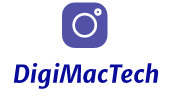Introduction
Touchscreen technology has revolutionized the way we interact with digital devices, and infrared (IR) touchscreens are at the forefront of this evolution. These screens use infrared light to detect touch, offering numerous advantages over traditional capacitive and resistive touchscreens, such as higher durability, the ability to sense touch without direct contact, and excellent performance in harsh environments. In this article, we will explore the common applications of infrared touchscreens across various industries.
Table: Key Features of Infrared Touchscreens
Below is a table highlighting the key features of infrared touchscreens:
| Feature | Description |
|---|---|
| Durability | Highly durable with no physical pressure required |
| Sensitivity | Highly sensitive, detects touch with gloves, stylus, or any object |
| Environmental Resistance | Works well in extreme temperatures and dirty environments |
| Multitouch Capabilities | Supports multiple touch points simultaneously |
| Maintenance | Easy to maintain, as there is no physical wear and tear |
Healthcare
In the healthcare industry, infrared touchscreens are utilized in numerous applications due to their high sensitivity and hygienic nature. They are used in:
- Medical Imaging Devices: Allowing doctors to navigate through images more efficiently without requiring direct contact.
- Patient Information Systems: Enabling smooth interaction with patient data systems, even when staff are wearing gloves.
- Surgical Monitors: Utilizing touchscreens in operating rooms for quick and sterile interactions.
Education
Infrared touchscreens have found significant applications in education by enhancing interactive learning experiences. Common uses include:
- Interactive Whiteboards: Facilitating dynamic lessons and engaging students through touch-based interactivity.
- Classroom Tablets: Allowing students to use tablets for interactive assignments and real-time feedback.
- Digital Kiosks: Providing information and wayfinding aids within educational institutions.
Retail and Hospitality
The retail and hospitality sectors benefit from infrared touchscreens by offering improved customer experiences and operational efficiencies:
- Self-Service Kiosks: Used in stores and restaurants to allow customers to place orders or check out independently.
- Point of Sale (POS) Systems: Allowing cashiers to process transactions quickly and accurately.
- Interactive Displays: Providing customers with product information and promotions through interactive screens.
Industrial and Manufacturing
Infrared touchscreens are favored in industrial and manufacturing environments for their resilience and reliability in harsh conditions:
- Control Panels: Allowing operators to interact with machinery controls safely and efficiently.
- Factory Automation: Enhancing automated processes through touch-based controls and monitoring systems.
- Inventory Management: Streamlining tracking and management of inventory using rugged touchscreens.
Public Infrastructure
Public infrastructure projects often incorporate infrared touchscreens to provide robust and user-friendly interfaces for public use:
- Information Kiosks: Offering information and services in public places such as airports, train stations, and libraries.
- Ticketing Machines: Facilitating the purchase of tickets for public transportation and events.
- Interactive Maps: Helping users navigate large campuses or public spaces through interactive map displays.
Gaming and Entertainment
In the gaming and entertainment industry, infrared touchscreens deliver immersive and interactive experiences:
- Arcade Games: Providing responsive and durable touch interfaces for various arcade game machines.
- Interactive Exhibits: Engaging visitors in museums and exhibitions through touch-based interactive displays.
- Control Panels: Enhancing user interaction with digital content in theme parks and entertainment venues.
Office and Corporate Use
Infrared touchscreens are also increasingly popular in office and corporate settings for enhancing productivity and collaboration:
- Conference Room Systems: Facilitating seamless presentations and meetings with touch-based controls on screens.
- Digital Signage: Displaying important announcements and information in a dynamic and interactive manner.
- Workstations: Providing employees with touch-enabled monitors for efficient interaction with their tasks.
Conclusion
Infrared touchscreens offer versatility and durability, making them ideal for a wide range of applications across multiple industries. From healthcare to gaming, these touchscreens provide a reliable and efficient interface that enhances user experience and operational efficiency. As technology continues to advance, we can expect to see even more innovative implementations of infrared touchscreens in everyday life.
